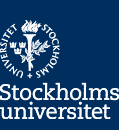Dr. Yoko Yamazaki, Institut für Vergleichende Sprachwissenschaft, Universität Zürich, will present a paper about the interplay between two language laws: ”Sievers-Edgerton’s law and Larsson’s rule in the Baltic ē-preterite”.
Short abstract:
There are two preterit stem formations in Baltic: a:-preterit and e:-preterit. The e:-preterit includes a category called long-vowel preterit that is characterized by the long root vowel. Larsson (2004) and Villanueva Svensson (2005) advocate the hypothesis that the preterit suffix *-e: should be a contraction of *-iya:, where the suffix is analyzed as the regular a:-preterit suffix added to a stem ending in -i-. Villanueva Svensson (2014) proposes that the long root vowels were introduced through Stang-Larsson’s rule in the suffix. This hypothesis explains the tonal variations of the verbs in the root structure ◦ERK-, ◦EUK-, and ◦E:K- that take ia-presents and e:-preterits. Yet, this scenario can be investigated in more detail. This hypothesis works out only if the suffix is accented, although the input *-iya:- is a Sievers-Edgerton’s disyllabic variant that occurs under unaccented environment after a heavy syllable (cf. Barton 1980: 269). An examination of the interaction of the position of the tone and Sievers-Edgerton’s variants of the suffix *-(i)ya:- will explain why the tonal variants are more common among the ◦ERK-, ◦EUK-, and ◦E:K-roots. Furthermore, this examination will enable us to analyze in more detail the distribution of the e:-preterit forms that do not have the lengthened root vowel despite their root structure in ◦ERK-, ◦EUK-, and ◦E:K-.
- Barton, Charles. 1980. “Notes on the Baltic preterite” Indogermanische Forschungen, 85, 246–278.
- Larsson, Jenny. 2004. “Metatony and length in Baltic”, Per aspera ad asteriscos: studia Indogermanica in honorem Jens Elmegård Rasmussen sexagenarii idibus martiis anno MMIV. red. / Adam Hyllested et al. Innsbruck : Universität Innsbruck, Institut für Sprachen und Literaturen, 305-322
- Villanueva Svensson, Miguel. 2014. “Tone variation in the Baltic ia-presents.” Indogermanische Forschungen, 119(1), 227–249.
Language of the seminar: English
All are welcome!








